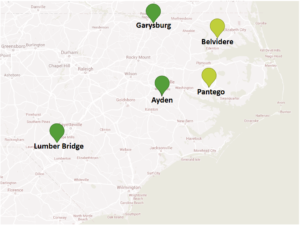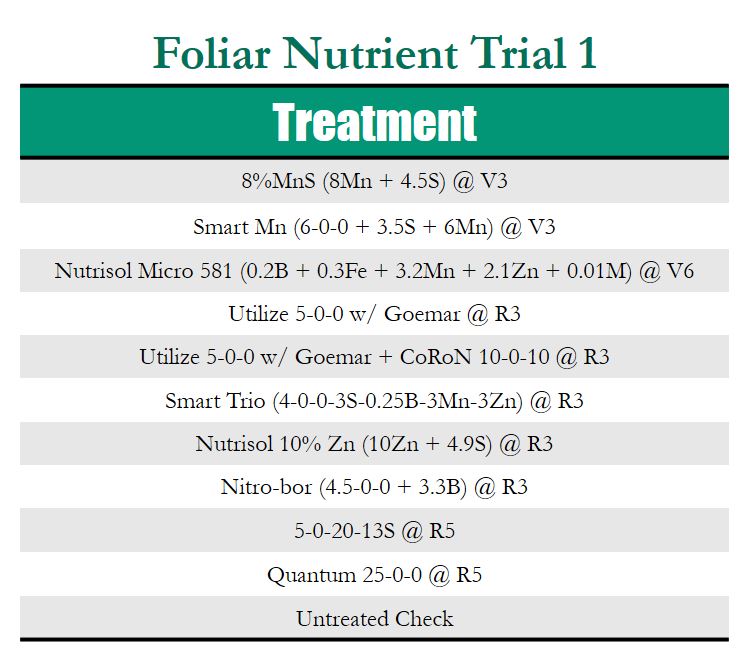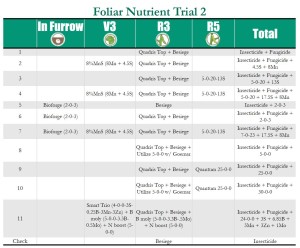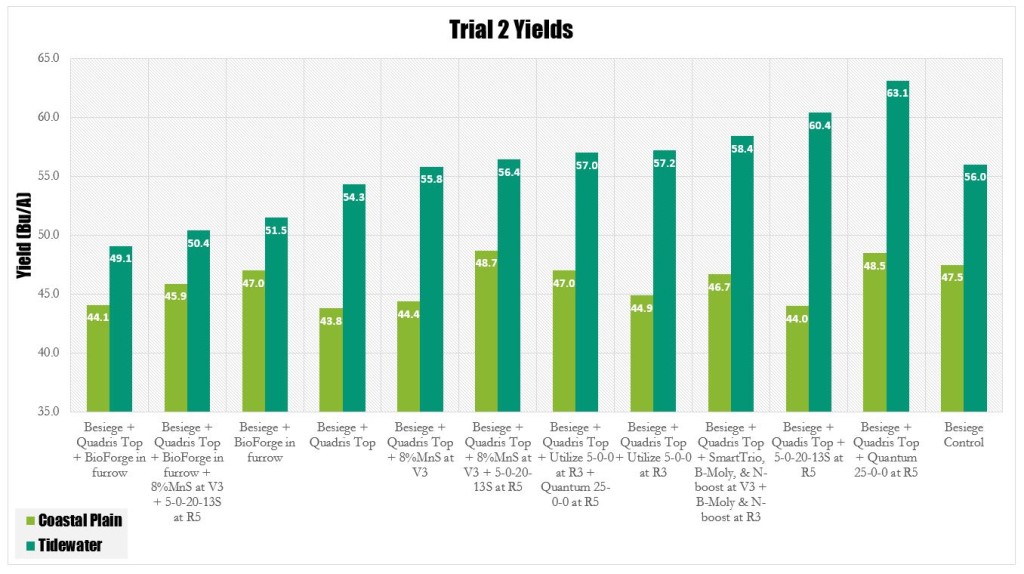Growers are constantly being hit with information from products that advertise their ability to increase yield, specifically, foliar N, P, K, and micronutrient fertilizers. Is in-season fertilization needed for “catch-up” in a soybean crop and are these products consistently a sound investment for an operation? Research from groups across the United States over the last 30 years has found that they may be on rare occasions, but as a whole, likely not.
Since new formulations of these foliar fertilizers are coming to the market each year, the North Carolina Soybean Producers Association funded research through the soy checkoff to investigate a number of foliar nutrient products both individually and in combinations over the growing season to determine if and when to apply these products. A two-article series beginning with this post will explore how and where the research project was conducted, what the results were and what that means for farmers.
The research was carried out by a group of crop consultants across Eastern North Carolina. Two different trials were conducted across 5 locations in 2015. Two locations in the tidewater region had high potential yields, and three locations in the coastal plain region had moderate potential yields.

The first trial was designed to look at the performance of 10 individual products while the second was designed to combine successful agronomic strategies with the foliar nutrient products to evaluate maximum performance and economic return to the grower. Products were chosen based on consultant experience, industry promotion, and grower interest. Treatments are described in the tables below and included a variety of different products applied at various stages of the growing season.
Pioneer 49T80R, a group IV indeterminate, was planted at the tidewater locations while Asgrow 6834, a group VI determinate, was planted at the coastal plain locations for both trials. Soil-applied fertilizer for both trials was based on recommendations from NCDA soil tests. Seed was treated with a standard fungicide treatment, but no insecticide treatment. Weed control was carried out throughout the season. Yield was measured and compared to the check in each trial to determine the effect of each treatment.
Some differences were observed between product performance in our two regions so yield data was analyzed separately for the coastal plain and tidewater locations. Comparing the yield of products tested in trial 1 for the coastal plain locations, no statistical differences were observed and many of the treatments actually yielded lower than the untreated control. There were no significant differences in yield between any of the products tested and the untreated control. In the tidewater locations, a few products showed promise, yielding higher than the untreated control, but only one product, Nutrisol Micro 581 had a yield significantly higher than the untreated control. Nutrisol Micro 581 is a trace element supplement that contains Boron (0.20%), Iron (0.30%), Manganese (3.20%), Zinc (2.10%), and Molybdenum (0.01%).
In trial 2, data was also analyzed separately for the coastal plain and tidewater locations. There were no statistically significant differences between the treatments and the control for either location, but in the coastal plain locations, treatments yielded very close to what the control did, while in the tidewater locations, we saw larger differences between treatments. Even though it wasn’t statistically significant, the treatment with Quantum 25-0-0 applied at pod fill (R5) was one of the highest yielding treatments for both locations. This was surprising as the Quantum 25-0-0 treatment was one of the lower performing products tested in trial 1.
Although some products did give a yield bump compared to the controls, it’s important to consider return on investment when deciding to add inputs into your management plan. Check back next week when we consider the return on investment for each of these products.










